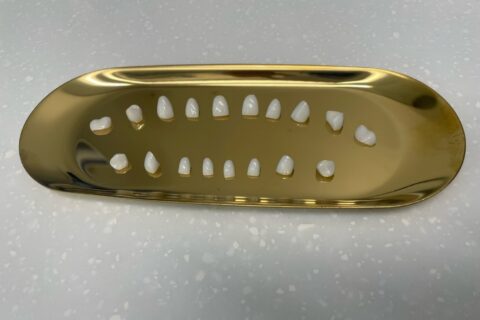Pros and Cons of Porcelain Veneers and How Do They Put the Veneers on Teeth?
Pros and Cons of Porcelain Veneers
Thinking about enhancing your smile with porcelain veneers? This detailed guide examines the benefits and drawbacks of veneers, their application process, and the types of results to anticipate. It’s designed to help you understand the process before you visit your cosmetic dentist.

What Are Porcelain Veneers?
Dental veneers are thin, custom-made shells placed over the front surface of teeth to restore appearance and symmetry. Typically made of porcelain, they mimic the translucency and shine of natural enamel. Veneers can correct discoloration, chips, mild misalignment, or gaps. For an official overview, visit the American Dental Association (ADA).
Benefits of Porcelain Veneers
- Natural Appearance: Porcelain reflects light similarly to enamel, making veneers nearly indistinguishable from natural teeth.
- Durability: With proper care, veneers can last 10–15 years or more.
- Stain Resistance: They resist stains better than enamel, keeping your smile brighter for longer.
- Minimally Invasive: Veneers require only slight removal of tooth enamel, preserving natural structure.
- Confidence Boost: A well-designed smile enhances confidence in social and professional settings.
Drawbacks to Consider
- Cost: The overall porcelain veneers cost depends on the number of teeth and case complexity. Your dentist will provide transparent pricing options.
- Irreversibility: Because a small layer of enamel is removed, the procedure cannot be undone.
- Chipping or Fracture Risk: Porcelain is durable but not indestructible—avoid chewing hard items.
- Maintenance: Veneers need regular cleaning, flossing, and professional care to maintain their shine and structure.
- Preexisting Dental Health: Veneers should only be placed on healthy gums and teeth. Visit the National Institute of Dental and Craniofacial Research for information on gum health.
How Porcelain Veneers Are Applied
- Consultation: Your dentist evaluates your goals and dental health to ensure veneers are the right option.
- Preparation: A minimal amount of enamel is reshaped to make room for the veneer.
- Fabrication: A dental lab creates veneers matched to your natural tooth shade and size.
- Bonding: Once crafted, the veneers are permanently bonded using advanced dental bonding materials for long-term stability.
How Long Do Porcelain Veneers Last?
With excellent care, most veneers last between 10 and 15 years before replacement is needed. To maintain results, brush gently with a soft toothbrush, floss daily, and see your dentist regularly. Learn more about maintenance tips from the Academy of General Dentistry (AGD).
Caring for Veneers
- Brush twice daily with non-abrasive toothpaste.
- Floss carefully between teeth and along gumlines.
- Wear a nightguard if you clench or grind your teeth.
- Schedule routine dental cleanings every six months.
Learn More About Veneers in Scottsdale
Want a deeper look at veneer options, materials, and before-and-after examples? Visit our veneer guide:
Porcelain Veneers in Scottsdale – Everything You Need to Know.
Contact S&C Dental
Ready to explore how veneers can transform your smile? Contact S&C Dental in Scottsdale, AZ, or call (480) 691-0020 to schedule your consultation.


